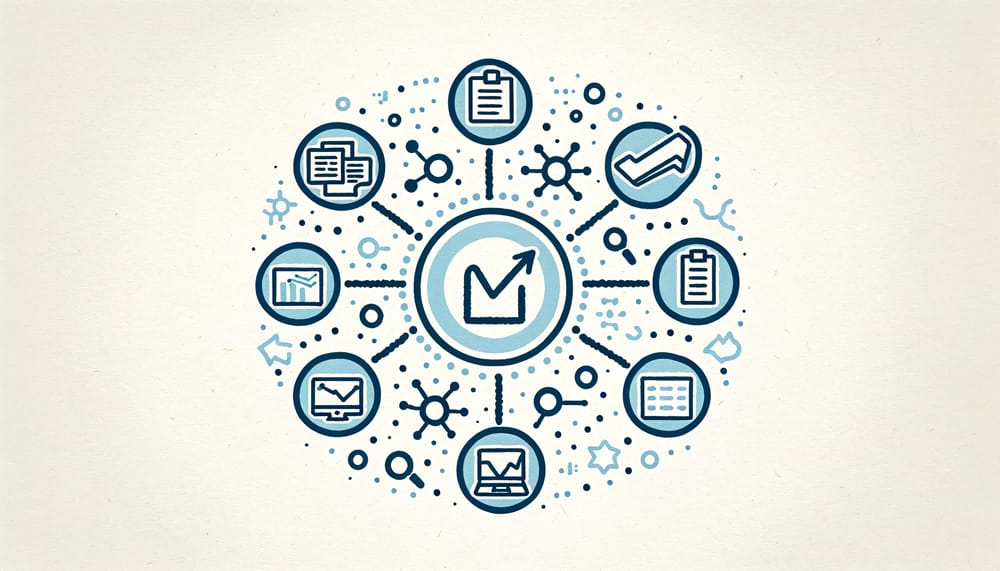Introduction to Reporting ESM Findings
Effective reporting in Experience Sampling Method (ESM) research is crucial for conveying the richness and nuances of the data collected. As ESM captures complex, multifaceted data, presenting these findings clearly and comprehensively is essential to ensure that the research is understood, appreciated, and can inform further study or practice. Additionally, for those new to ESM or seeking a foundational understanding, Introduction to Experience Sampling Method (ESM) is an essential read.
The Importance of Effective Reporting in ESM Research
-
- Translating Data into Insights: Effective reporting translates complex ESM data into understandable insights. It bridges the gap between raw data and the story it tells, making the findings accessible to a broader audience.
-
- Enhancing Research Impact: Well-reported ESM findings can significantly impact both academic circles and practical applications.
Overview of Key Elements in Presenting ESM Findings
- Clarity in Methodology: Clear articulation of the ESM procedures, including sampling methods and data collection processes, is foundational. This clarity, as outlined in Designing an ESM Study: Key Considerations, provides context and validity to the findings.
- Comprehensive Data Presentation: Presenting both quantitative and qualitative aspects of ESM data ensures a holistic view of the findings. Techniques for this are discussed in Analyzing ESM Data: A Guide.
- Effective Data Visualization: Utilizing graphs, charts, and infographics, as recommended in ESM Data Visualization Techniques, can make complex data more accessible and engaging.
- Interpretation and Implication: Discussing the implications of the findings and their relevance to the broader field is key to making ESM research impactful.
“In ESM research, the art of reporting is as crucial as the science of data collection. It’s about transforming data into a compelling narrative that resonates with its audience, be it academia or industry.”
A well-structured and articulate report is a critical component of ESM research, ensuring that the valuable insights gleaned from the method are effectively communicated and can influence future research and practice.
Structuring Your Research Report

When it comes to reporting Experience Sampling Method (ESM) research findings, a well-structured report is key to clearly conveying complex information. Organizing ESM research findings effectively ensures that the study’s insights are comprehensible and impactful.
Guidelines on Organizing ESM Research Findings
-
- Clear Introduction: Begin with an introduction that sets the stage for your study. This should include the research background, objectives, and significance. The introduction frames the context, as highlighted in Introduction to Experience Sampling Method (ESM).
-
- Comprehensive Literature Review: A literature review that situates your ESM study within the existing body of research is crucial. Uncover the distinct characteristics and applications of the Experience Sampling Method (ESM) and Ecological Momentary Assessment (EMA) in our detailed guide, Experience Sampling Method (ESM) vs. Ecological Momentary Assessment (EMA): Understanding the Differences and Applications. This resource provides an in-depth comparison of these two methodologies, helping researchers choose the most suitable approach for their studies.
-
- Methodology Breakdown: Detail your ESM methodology, including sampling strategies, data collection tools, and processes. Clarity in this section, as emphasized in Setting up ESM Data Collection, is vital for the reader’s understanding and for replicating the study.
Components of a Comprehensive ESM Research Report
-
- Presentation of Findings: The findings section should be organized logically, often following the sequence of your research questions or hypotheses. Present both quantitative and qualitative data, as appropriate.
-
- Data Visualization: Incorporate charts, graphs, and infographics for visual representation of your data. Effective visualization techniques, discussed in ESM Data Visualization Techniques, can enhance the comprehensibility of complex ESM data.
-
- Discussion of Results: In the discussion section, interpret your findings in relation to your research questions and the broader literature. This includes exploring the implications of your findings, potential limitations, and suggestions for future research.
-
- Conclusion: Summarize your key findings and their significance. A strong conclusion reinforces the importance of your research and leaves a lasting impression on the reader.
-
- References and Appendices: Include a comprehensive list of references and any supplementary material in appendices. This may consist of detailed data tables, additional analyses, or survey instruments.
“A well-structured ESM research report not only narrates your findings but also showcases the rigor and depth of your research, contributing significantly to the field’s understanding.”
Adhering to these guidelines and structuring components ensures that your ESM research report is not only comprehensive but also coherent and engaging. This structure facilitates the clear communication of complex ESM findings, making your research accessible to a broad audience.
Describing Methodology and Participants

In Experience Sampling Method (ESM) research, a detailed and transparent description of the methodology and participant demographics is crucial. This section of the report not only lends credibility to the study but also allows for reproducibility and better understanding of the findings.
Detailing ESM Procedures and Participant Demographics
-
- Outline of ESM Procedures: Clearly describe the ESM procedures, including the sampling strategy (e.g., random or signal-based sampling), frequency of prompts, type of data collected (e.g., self-reports, physiological data), and the tools or technology used (such as mobile apps or wearable devices). For example, in Technological Innovations in ESM, the use of specific ESM software or applications can significantly impact the nature of data collection.
-
- Participant Recruitment and Selection: Detail how participants were recruited and selected for the study. Include criteria for inclusion and exclusion, and explain the rationale behind these choices. Learn the art of selecting the right participants for Experience Sampling Method (ESM) studies in our informative guide, How to Select Participants for an Experience Sampling Method (ESM) Study: Sampling Techniques. This guide delves into various sampling techniques, providing insights and strategies to help researchers ensure effective participant engagement in ESM research.
-
- Participant Demographics: Provide a comprehensive breakdown of participant demographics, including age, gender, occupation, or any other relevant characteristics. This helps in understanding the context and applicability of the findings. Participant demographics can provide insights into the representativeness of the sample, as discussed in Setting up ESM Data Collection.
Ensuring Clarity and Transparency in Methodological Reporting
-
- Justification of Methodological Choices: Explain the reasoning behind each methodological decision, from the choice of ESM parameters to participant recruitment strategies. This transparency, as advocated in Designing an ESM Study: Key Considerations, is key to the reader’s understanding of how and why the study was conducted in a certain way.
-
- Ethical Considerations: Detail the ethical considerations and approvals for the study, particularly how participant consent was obtained and how data privacy was maintained. Addressing ethical aspects, as highlighted in Ethical Considerations in ESM Research, is crucial in methodological reporting.
-
- Limitations of the Methodology: Acknowledge any limitations of the ESM methodology and the participant sample. Discuss how these limitations might impact the findings and interpretations.
“In ESM research, the methodology and participant section is not just a procedural narrative; it’s the blueprint that lends integrity and depth to the study, guiding readers through the journey of discovery.”
By meticulously detailing the methodology and participant demographics, researchers can provide a clear, transparent, and comprehensive overview of their ESM study. This thoroughness not only enhances the report’s quality but also reinforces the validity and reliability of the research findings.
Presenting Quantitative ESM Data

Effectively presenting quantitative data in Experience Sampling Method (ESM) research is pivotal for conveying the study’s findings accurately and understandably. This involves not only showcasing statistical results but also ensuring they are accessible and interpretable to a wide audience.
Techniques for Effectively Reporting Quantitative Findings
-
- Structured Data Presentation: Organize data in a logical, easy-to-follow format. Start with descriptive statistics before moving to more complex analyses. Include measures like mean, median, standard deviation, and range to give a clear picture of the data distribution, as seen in studies like Handling Missing Data in Experience Sampling Method (ESM) Research: Best Practices and . Present findings in a sequence that aligns with your research questions or hypotheses.
-
- Use of Tables and Charts: Tables are effective for presenting large amounts of data succinctly, while charts and graphs can illustrate trends and relationships more vividly. For example, line graphs can depict changes in mood or behavior over time. Ensure that tables and charts are clearly labeled and include necessary descriptions for accessibility.
-
- Statistical Analysis Reporting: When reporting results from statistical tests (like t-tests, ANOVAs, regression analyses), clearly state the test used, the rationale for its use, and the findings in plain language. In complex analyses, such as those discussed in Analyzing ESM Data: A Guide, break down the process and results step by step to enhance comprehension.
Tips for Making Statistical Results Accessible and Understandable
-
- Simplifying Statistical Language: Use simple, non-technical language to explain statistical results. Avoid overusing jargon or complex statistical terms without explanation. This approach is crucial, especially when addressing a diverse audience, including those less familiar with statistical methodologies.
-
- Contextualizing Data: Provide context for the data by explaining what the statistics mean in practical terms. For instance, rather than just presenting a correlation coefficient, explain what the relationship between the variables suggests about the study topic.
-
- Visual Data Aids: Utilize infographics or other visual aids to summarize key findings. Visual representations, like those discussed in ESM Data Visualization Techniques, can help in making complex data more digestible. Visual aids should complement the text, providing an intuitive understanding of the data.
-
- Highlighting Key Findings: Emphasize the most important findings upfront. Summarize the key takeaways at the beginning of the results section to capture the reader’s attention. Use bullet points or sidebars for highlighting critical data points or implications.
“Presenting quantitative ESM data effectively is akin to storytelling with numbers; it involves weaving statistical details into a narrative that is both informative and engaging.”
Adopting these techniques ensures that the quantitative findings from ESM research are not only rigorously presented but also easily comprehensible. This approach enhances the overall impact and usability of the research, making the findings valuable to both the academic community and practitioners in the field.
Reporting Qualitative ESM Insights

Qualitative insights from Experience Sampling Method (ESM) studies provide a depth of understanding that complements quantitative data. Presenting these insights effectively involves crafting a narrative that is both rich in detail and grounded in analytical rigor.
Strategies for Presenting Qualitative Data from ESM Studies
-
- Thematic Organization: Organize qualitative findings into themes or categories. This thematic approach, which can be informed by techniques discussed in Integrating ESM with Qualitative Research, helps in structuring the data coherently.
-
- Rich Descriptions and Narratives: Use descriptive language to convey the depth of participants’ experiences. Detailed narratives bring the data to life and provide context to the quantitative findings. Including direct quotes from participants can add authenticity and relatability to the report.
-
- Case Studies or Examples: Highlighting individual cases or specific examples can illustrate broader trends or themes in the data. This approach can make abstract concepts more tangible for the reader. Case studies should be chosen for their representativeness or for their ability to elucidate complex phenomena.
Balancing Narrative Depth with Analytical Rigor
-
- Linking to Quantitative Data: Where possible, connect qualitative insights back to quantitative findings. This linkage can provide a more holistic understanding of the data and reinforce the validity of the findings. For example, qualitative narratives can explain the reasons behind statistical trends observed in Analyzing ESM Data: A Guide.
-
- Critical Analysis: Go beyond merely describing qualitative data; critically analyze it to draw meaningful conclusions. Discuss how the qualitative insights contribute to answering the research questions or fill gaps in existing literature. Employ analytical frameworks or theories relevant to the study’s domain to deepen the analysis.
-
- Reflecting on Limitations: Acknowledge the limitations inherent in qualitative data, such as subjectivity or potential biases. Discuss how these limitations were addressed or mitigated in the study. Transparency about limitations, a key aspect of ethical research outlined in Ethical Considerations in ESM Research, enhances the credibility of the findings.
“In reporting qualitative ESM insights, the researcher weaves a tapestry of narratives and themes, grounded in analytical precision, to portray the nuanced complexities of human experience.”
Effectively presenting qualitative data from ESM studies requires a thoughtful balance between vivid storytelling and meticulous analysis. This approach not only enriches the research narrative but also ensures that the qualitative insights are robust, meaningful, and contribute significantly to the field’s understanding.
Data Visualization in ESM Reporting

Effective data visualization is a cornerstone of reporting Experience Sampling Method (ESM) research findings. Visual representations such as graphs, charts, and infographics can transform complex ESM data into accessible and engaging insights, enhancing the impact of the research.
Best Practices in Visualizing ESM Data
-
- Selecting Appropriate Visualization Tools: Choose visualization tools that best represent the nature and complexity of the ESM data. Line graphs can illustrate changes over time, while bar charts may be suitable for comparing different groups or conditions.
-
- Simplicity and Clarity: Aim for simplicity in design to ensure clarity and ease of understanding. Avoid overcrowding visuals with too much information, which can be overwhelming or confusing. Clear labeling and a consistent color scheme, as advised in ESM Data Visualization Techniques, enhance readability and comprehension.
-
- Contextualizing Visuals: Provide context for each visual representation. This includes a brief description or caption explaining what the visual depicts and its relevance to the study’s findings. Contextualizing visuals is particularly important in multidimensional studies, where various factors might influence the outcomes.
Utilizing Graphs, Charts, and Infographics for Impactful Presentations
-
- Graphs for Trend Analysis: Use graphs like line charts to depict trends in ESM data over time. This is effective for showing patterns or changes in responses, especially in longitudinal studies. Explore the intricacies of ESM in “Using Experience Sampling Method (ESM) in Longitudinal Studies: Challenges and Solutions”.
-
- Infographics for Complex Data: Develop infographics to present complex or voluminous data in a digestible format. Infographics can combine text, images, and data, making them ideal for summarizing key findings or providing an overview of the study. This approach is beneficial for reports intended for a broader audience, including stakeholders who may not be familiar with technical aspects of ESM research.
-
- Interactive Visualizations for Digital Reports: In digital formats, consider interactive visualizations that allow the reader to explore different aspects of the data. Interactive elements can engage the audience and provide a deeper understanding of the findings. As digital reporting becomes more prevalent, as noted in Future ESM Trends and Predictions, the use of interactive visuals can significantly enhance the impact of ESM research reports.
“Visualizing ESM data is an art form that balances aesthetics with informative clarity, transforming numbers and responses into visual narratives that speak volumes.”
By employing these best practices in data visualization, ESM researchers can ensure that their findings are not only accurately represented but also resonate with their audience. Well-designed visuals can illuminate key aspects of the data, making complex findings accessible and engaging.
Discussing Findings and Implications

The discussion section of an Experience Sampling Method (ESM) research report is where the results are interpreted, contextualized, and woven into the broader tapestry of the field. It’s an opportunity to transform data into meaningful insights and chart a path for future research.
Constructing a Meaningful Discussion of ESM Results
-
- Interpreting ESM Data in Context: Begin by interpreting the ESM findings in the context of your research questions or hypotheses. Discuss how your results align with or differ from existing literature for comparison or contrast. Consider various factors, such as participant demographics or methodological nuances, that might have influenced the results.
-
- Integrating Quantitative and Qualitative Insights: In multi-method ESM studies, integrate both quantitative and qualitative findings to provide a comprehensive understanding. Discuss how the qualitative narratives complement or elucidate the quantitative trends. This holistic approach, as seen in Integrating ESM with Qualitative Research, offers a richer interpretation of the data.
Drawing Conclusions and Outlining Implications for Future Research
-
- Drawing Conclusive Statements: Based on the data analysis, draw conclusions that are supported by the findings. Be cautious to not overextend beyond what the data can reasonably support.
-
- Implications for Practice and Policy: Discuss the practical implications of your findings. How can they inform practice, policy, or further research in the field?
-
- Suggestions for Future Research: Identify gaps that emerged during your study and suggest areas for future research. This could involve exploring different demographics, employing varied ESM methodologies, or addressing limitations identified in your study. As noted in Future ESM Trends and Predictions, staying attuned to evolving trends and technologies can inspire new directions in ESM research.
-
- Reflecting on Methodological Limitations: Acknowledge any limitations of your study, including aspects of the ESM methodology that might have influenced the results. Discussing limitations transparently, as highlighted in Challenges and Solutions in ESM Research, enhances the credibility of your research.
“The discussion section is where ESM data is transformed from mere numbers and narratives into impactful insights, guiding the path forward for research and application.”
A well-crafted discussion not only showcases the significance of the ESM findings but also stimulates further inquiry, extending the reach and impact of the research beyond its immediate results.
Conclusion: Summarizing Key Takeaways
The conclusion of an Experience Sampling Method (ESM) research report is not just the end but a reflective summary that encapsulates the essence of the findings, their implications, and the broader impact of the study. It serves as the final piece that ties together all elements of the research, leaving the reader with a clear understanding of what was achieved and why it matters.
Wrapping Up the ESM Research Report
-
- Highlighting Major Findings: Begin by succinctly restating the most significant findings of your ESM study. This recap should reflect the data’s story and the core insights gleaned from both quantitative and qualitative analyses.
-
- Reiterating the Research Significance: Emphasize the contribution of your study to the existing body of knowledge, particularly in the context of ESM research. Highlight how your findings add value or offer a new perspective, referencing relevant studies for broader context.
Tips for Ensuring a Cohesive and Impactful Conclusion
- Linking Back to Objectives: Reconnect your findings to the initial research objectives or questions, demonstrating how the study fulfilled its purpose.
- Discussing Implications: Clearly articulate the practical, theoretical, or policy implications of your findings.
- Encouraging Future Research: Suggest areas for further investigation, drawing on gaps or questions that emerged during your study. This forward-looking perspective is vital, as noted in Future ESM Trends and Predictions.
- Concise and Compelling Closure: Ensure that your conclusion is concise yet comprehensive, leaving the reader with a clear understanding of the study’s value and a compelling final impression.
“In the realm of ESM research, a well-crafted conclusion bridges the gap between intricate data analysis and the broader narrative of discovery, culminating the research journey with clarity and impact.”
The conclusion is an essential part of the ESM research report, crystallizing key findings and their relevance, and paving the way for ongoing dialogue and exploration within the field.
Up next, we delve into the article “Overcoming Common Challenges in ESM Research,” which will explore the typical obstacles faced in ESM studies and offer solutions and strategies for addressing them. This article is essential for researchers looking to navigate the complexities of ESM effectively. Find it at Challenges and Solutions in ESM Research. Additionally, for a comprehensive introduction to ESM, Introduction to Experience Sampling Method (ESM) is an invaluable resource. Stay tuned to gain insights into overcoming the challenges inherent in ESM research.
You Might Also Be Interested:
- 📚 Delve into our comprehensive ESM Article Collection for insightful perspectives on Experience Sampling Method (ESM).
- 🌟 See our article Best Tools for Experience Sampling Method in 2024 to discover the top tools in the field.
- 🔍 Learn how the advanced features of Fibion Insight can aid your ESM research.
- 📅 Planning an ESM study? For a chat with our ESM expert, book a session with Dr. Miriam Cabrita.
Frequently asked questions about this topic
What are the key elements of effective ESM research reporting?
+
Effective ESM research reporting involves clarity in methodology, comprehensive data presentation, effective data visualization, and insightful interpretation and implications of findings.
How should ESM research findings be structured in a report?
+
ESM research findings should be structured with a clear introduction, comprehensive literature review, detailed methodology breakdown, presentation of findings, and a strong conclusion.
What is the importance of discussing methodology and participants in ESM research reports?
+
Discussing methodology and participants provides transparency, lends credibility to the study, and allows for reproducibility and better understanding of the findings.
How should quantitative and qualitative ESM data be presented in a report?
+
Quantitative ESM data should be presented with structured data, tables, charts, and clear statistical analysis, while qualitative insights should be organized thematically with rich descriptions and case studies.
What role does data visualization play in ESM research reporting?
+
Data visualization enhances the impact of ESM research by making complex data accessible and engaging through graphs, charts, infographics, and interactive visuals.
What are the key aspects to focus on in the discussion section of an ESM research report?
+
The discussion section should interpret ESM data in context, integrate quantitative and qualitative insights, draw conclusive statements, and outline implications for future research.
















